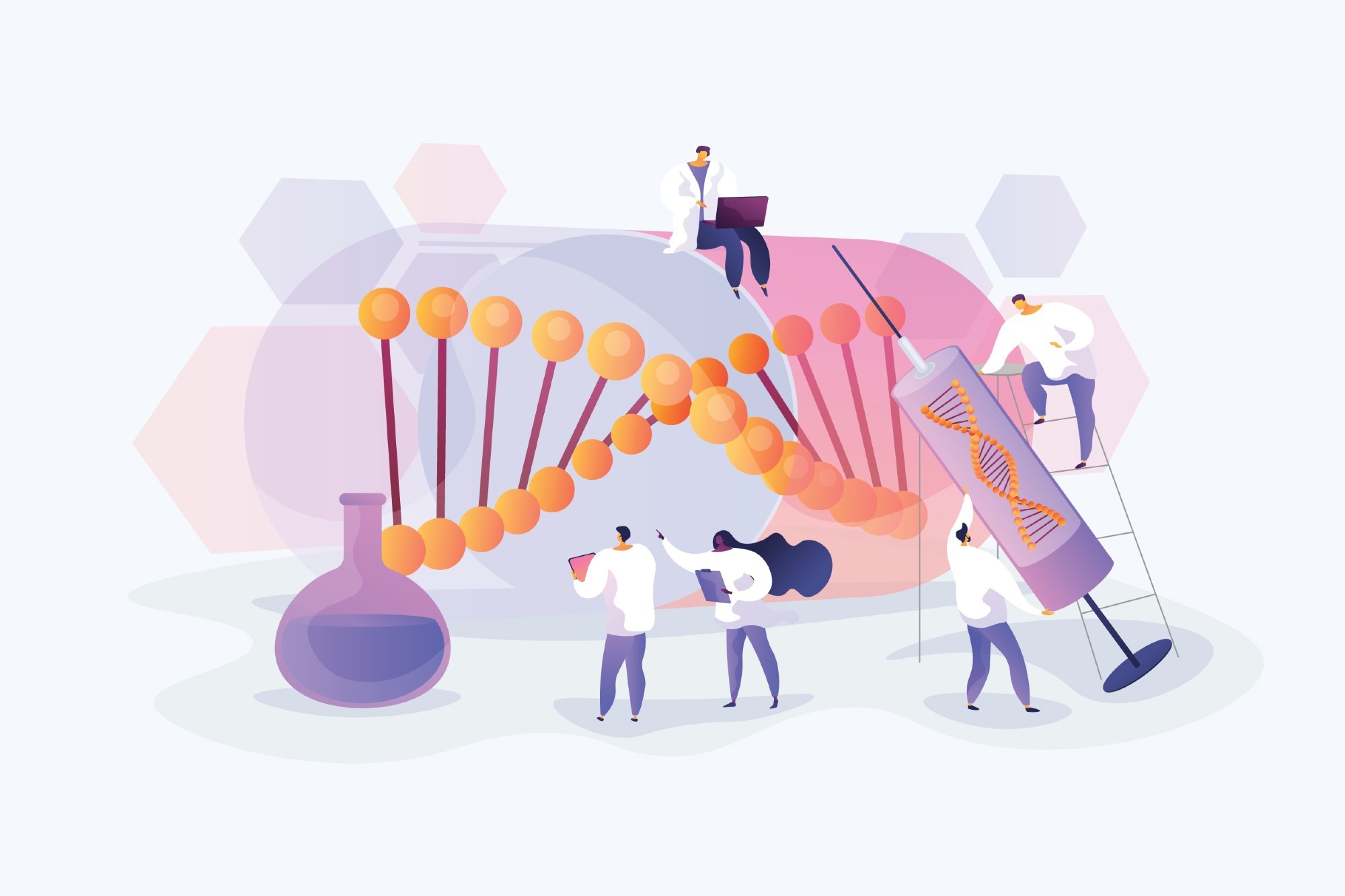[ad_1]
As portion of our SLAS Europe 2022 coverage, we spoke to Gerrit Gutzke and Michael Bussmann from Azenta Existence Sciences about the products and solutions they offer for everyday living sciences research and what the long run looks like for the sector.
Please can you introduce yourself and convey to us about your role at Azenta Lifestyle Sciences?
My name is Gerrit Gutzke. I am a senior director at Azenta Daily life Sciences and the typical supervisor of our consumables and instrument business enterprise. I arrived to Azenta via the acquisition of 4titude again in 2017.
I am Michael Bussmann, director of product management for consumables and instruments at Azenta Everyday living Sciences.
In 2021, you relaunched your brand as Azenta Existence Sciences. With around 10 years working on the reducing edge of life sciences, why did you pick to rebrand your firm? What does Azenta characterize, and how does this rebranding assist put your prospects and their analysis at the forefront of your company?
Previous yr, we officially joined a number of best-in-course existence science organizations below 1 new identity – Azenta Lifestyle Sciences. In bringing collectively our former brand names which includes Brooks Life Sciences and GENEWIZ, Azenta’s expertise spans throughout the sample lifecycle, giving unrivalled sample administration answers that empower our buyers to speed up the rate of their analysis.
As Azenta, we are a pure-engage in daily life sciences business, so by reintroducing ourselves as Azenta Life Sciences, we display that we are 100% focused to helping lifetime sciences corporations with all our strength and passion. We purpose to acquire a loaded understanding of consumer desires to tutorial them to the ideal possible solutions and help them provide breakthroughs and therapies to current market speedier.
Azenta Life Sciences Brand Start Online video
Over the final decade, we have witnessed large breakthroughs inside of the daily life sciences sector. What do you personally imagine to be some of the most amazing achievements in modern years, and what part do you believe new technological innovation has performed in these developments?
Usually, breakthroughs are constantly related to new systems. Some of the largest technologies that have remodeled the everyday living sciences sector of class consist of NGS and gene enhancing.
Connected to gene editing, there are a lot of exciting developments happening in Cell and Gene Therapies, particularly the work around AAV and CAR-T. A nice example where life sciences and Biopharma success is connected, together perhaps under “personalized medicine through advancements in genomics”.
Other breakthroughs have occurred regarding microbiome therapies, RNA mRNA therapies, or antibody therapies. For any of these exciting advancing areas, we enable the path forward with automation and connectivity of instruments and digitization in general, which is why we came together in Dublin at SLAS EU.
At Azenta Life Sciences, you offer a broad range of products and services across a variety of sectors within the life sciences, including agriculture, biobanking, and pharma. Please tell us more about some of the products/services you offer and the importance of being able to help multiple sectors within life sciences research to ‘accelerate discovery, development, and delivery’?
Given that the typical workflow starts with sample collection and then on to sample identification, storage, processing, and analysis, most would agree that accelerating these workflows often requires automation.
From the simplest to the most complex products in our portfolio, we partner with our customers to find solutions that accelerate workflows and drive automation wherever possible. A great example of this is our sample collection tubes. Prior to COVID, many people were still using very simple, non-coded tubes with a sticky label on the side, but when COVID hit, and the demand went up significantly, those tubes were creating lots of issues in automation because these sticky labels occasionally came off the tubes, which was not only a problem for sample identification but also caused automated lines to come to a full stop.
Our tubes however are tri-coded with a laser-etched, permanent 2D code on the base, and a linear and human-readable code on the side, which means the codes never come off the tube – the perfect automation solution. Secondly, it is important not to forget that the sample, which actually holds the highest value, is in contact with these tubes at all times, and that sample integrity is the most important thing in every workflow. Our tubes are made from virgin medical-grade polymer, ensuring that no leachables or extractables are coming off the tube. Preserving the sample is of the utmost importance, regardless of the sample type or industry.

Image Credit: Sergey Nivens/Shutterstock.com
Many of the products on your site, including your sample store, not only offer maximum productivity but are also designed to fit in today’s standard lab. With laboratory space becoming increasingly challenging, how important was it to you that your products will easily integrate into the lab? What benefits does this have for both user experience and research?
These days, laboratory and bench space is at a premium. That said, our customers naturally need to bring in new equipment and technologies to meet their ever-changing needs. The benefit of our equipment having a smaller footprint means that it can fit within limited space, leading to increased throughput and efficiency. Of course, the total benefit, in the end, is increased productivity and profitability for the customer.
You exhibited at SLAS EU 2022. Can you tell us more about what you exhibited here and what was displayed at your booth?
SLAS and SLAS EU, of course, are two of the most important shows for Azenta Life Sciences. We prominently displayed our consumables and instruments, including multiple automation friendly sample tubes of various working volumes. We also highlighted connected instruments, such as semi-automated/ automated cappers, decappers, and readers. Additionally, our newly launched product, a semi-automated handheld decapper was one of the ten finalists of the New Product Award at SLAS EU.
We presented PCR plates and microplate consumables, as well as automated sealers and de-sealers. In general, these automated instruments can be used as standalone benchtop devices or fully integrated into an automation workflow.
Finally, we have a broad range of services available including sample sourcing, genomics and analytical services, sample storage, as well as data and informatics that we discussed at both shows that enable our customers to streamline their research needs.
One notable area of focus for you is surrounding genomics, with GENEWIZ offering genomic services to your customers. Why was genomics a particular choice for Azenta, and how do your product offerings and the genomic services fit together from a strategic perspective?
With the acquisition of GENEWIZ in 2018, we gained over 20 years of experience in genomics, sequencing technologies, and gene synthesis, particularly. With that acquisition, we could support a sample’s entire life cycle, from sample collection to sample storage. Finally, sample analysis allowed us to add way more value to the samples under our care.
Genomics Solutions by Azenta Life Sciences
As well as your vast portfolio of products and services, you also offer a great amount of support on your site, ranging from product updates and technical support to webinars and videos. How important is having a wide variety of resources available to your customer, and how does this help build better relationships?
I would say that COVID-19 has indeed changed commercial models within the life sciences industry. Many companies, us included, naturally preferred face-to-face meetings but with the appearance of COVID, this was suddenly no longer possible. This meant that we were forced to build a better digital experience for our customers, and now, we are luckily able to meet in person again.
However, we have learned that strong digital experiences can complement our overall strategy, and at Azenta, we are just getting started. We look forward to sharing these expanded digital experiences with our customers and online communities in the months to come.
Collaboration is an integral aspect of scientific research, increasingly highlighted by the COVID-19 pandemic. As a company focused on ‘bringing impactful breakthroughs and therapies to market faster’, how important do you believe collaboration is in achieving this mission? How does Azenta Life Sciences help to foster innovation and collaboration within the life sciences?
It is our customers who are dealing with the complex challenges, so it is of the utmost importance that we have a strong collaboration with our customers, as well as with other companies, to help them find the best possible solutions and overcome these issues.
If you visited our booth at SLAS EU, you would have seen that lots of our standard products started life as custom projects to help an individual customer overcome a particular issue, but they have also proven to be of importance to the broader scientific community.
Our customers are also helping us fine-tune products during beta test phases before the official product launch. Last, but not least, we also rely on interacting with other industrial partners whenever we need additional skill sets to help develop products faster and bring solutions to the market quicker.
With continued innovation within the life sciences, what do you believe the future to look like? Are there any particular sectors you are excited to watch evolve?
Predicting the next breakthrough or trend is crucial. I think we will continue to see major leaps in the cell and gene therapy field, and in personalized medicine with the advancements through genetics.
Many clinical trials are already ongoing in the cell and gene therapy field, so we will see a lot of movement here. Beyond this, we will see the general continuous trend towards automation. Throughout COVID, we have seen the advantages of automation and the connectivity of instruments. This is a developing field where products from Azenta will play an important role.

Image Credit: Visual Generation/Shutterstock.com
What’s next for Azenta Life Sciences? Have you got any exciting projects in the pipeline?
We have got some exciting new products coming soon. As I mentioned already, we are bringing out a handheld device, but we also have projects regarding automated devices. Those will be a new automated capper/decapper for septum tubes, and a new automated sealing device with the capability to seal individual PCR tubes in a PCR plate.
A lot of innovations are coming – stay tuned for more.
Where can readers find more information?
About Gerrit Gutzke
- Senior Director and General Manager Consumables & Instruments

- General management and P&L responsibility for the global C&I business
- Joined Azenta Life Science further to the acquisition of 4titude Ltd. in 2017
- PhD in Molecular Biology from the Technical University of Braunschweig, Germany
About Michael Bussmann
- Director Product Management Consumables & Instruments

- Joined Azenta Life Science in May 2022
- 2010 – 2022: Various Product Management Roles within the Life Science Industry
- PhD in Biochemistry from the Helmholtz Center Jülich, Germany
[ad_2]
Source link
